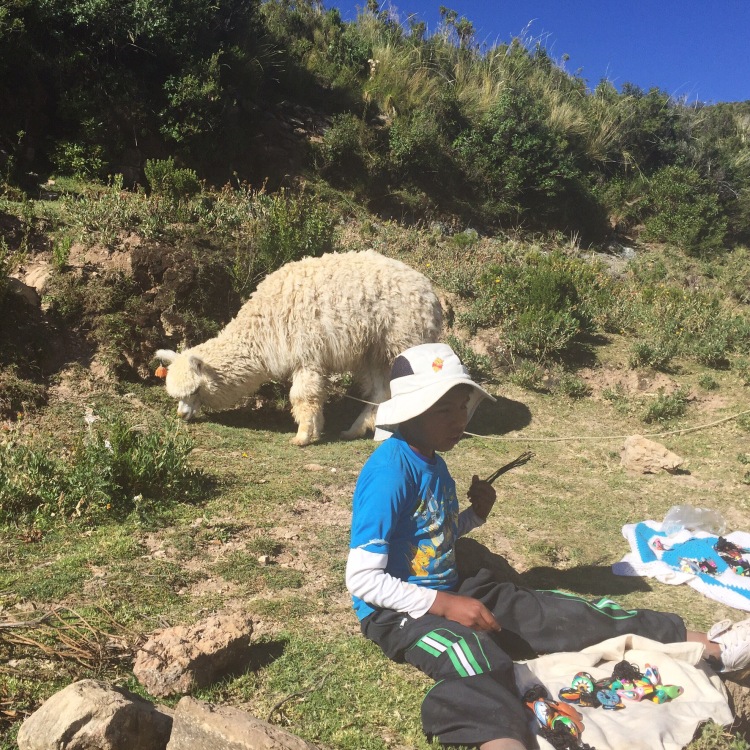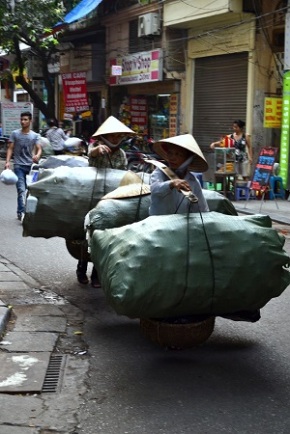An insight into the lives of Aymaras, indigenous people of the Andes and lake Titicaca in Bolivia and Peru; about their women, fashion style and admirable self-sufficiency.
After a 14km hike throughout the Isla del Sol (Island of the Sun), where Incas were born, we arrive to an Aymara community above Titicaca Lake at a height of 4000m. Eight hungry English, three Australians and one Czech invade one of tiny local restaurants and occupy its entire space. La dueña de la casa (the owner), an older Aymara woman, has panic as well as excitement in her dark eyes; excitement about the coming profit, panic how to feed such a hungry bunch of “gringos” (foreigners). Panic – excitement 1:1
The menu is long but the woman avidly confirms that everything is available (I guess she says so out of fear that we would run away if something was missing.) She advertises famous Titicaca “trucha” (a trout), a local specialty made in 100 possible ways (you cannot make a difference in between them on the pictures, though). But as I say, we are hungry and we go for a couple of pizzas, extra large. (Panic – excitement 3:1). And the buzz begins….

The restaurant transforms into a bee-hive. Women from all neighbouring restaurants are rushing to ours and now I understand why all of them offer the same menu. The rule is that cooking takes place where customers are. If ingredients are missing at the place of action, they will come from a pantry next door, and at the end pizzas come to our plates not only from the kitchen of our restaurant but from all possible directions, resulting in a great success. We all eat at the same time, we are full, add to that a bottle of Bolivian red which painted rouge on our faces already burnt from hot altitude sun. The lady gives us a black or gold wide smile, happiness on both sides. (Panic – excitement 3:5) Mission “dinner” completed.
Mamitas
When meeting Aymara women on your trek, usually accompanied by a cute infant or even cuter donkey or llama, you greet them “buenos días, mamita”. I would easily have lots of adoptive mums here in Bolivia. Looking at them invites me for giving them a hug.
They have round smiley faces, deep wrinkles inscribed on their sun-burnt dark skin. They are plump, wihich is even intensified by their large colourful “polleras” (skirts), and have a décolletage of an impressive size, on which little Aymaras must have the sweetest dreams.

The first thing to spot on Aymara women is their outfit, all looking like two peas in a pot. The most remarkable item is their bowler hat, which you usually see on English men, looking quite funny on described-above Aymara women. This fad found its place in their wardrobes in 20s and have stayed there since.
The legend has it that the hats were initially brought from Europe for Europeans working on the rail, but were too small for them and were passed to indigenous people instead. However, they look small on Aymaras either, what they do not seem to mind, resulting that they are rather loosely laid on their heads than properly put, as to be blown off any minute – funny but definitely stylish.
Apart from the hats and polleras there is also a short jacket, an indispensable “aguayo” a blanket to carry kids, crops, shopping or all at once, and two long raven-black braids, usually tied together at the bottom. Single ladies can add a red flower to their hats as a sign that they are in a hunt for husband. I find this particularly useful and I wonder how many potential husbands I missed on a ride in the tube for example. As a western woman I probably have to transmit different signals, maybe Bluetooth to connect out iPhones first before we connect ourselves, exchange Facebook details, or give a “swipe right” on Tinder first and meet in the real world later.

Many countries, many customs
Passing by Aymara humble dwellings on a small island in the middle of the nature makes me think, what a range of different lifestyles there is on the planet. Especially when looking at children.
They are not even 5 years of age and they are already professional negotiators; “I’ll give you discount if you buy two”, counting coins quicker than croupiers in casinos, and a little Aymara lady in pink dress purses her lips and hugs a llama, because she knows how cute she is, and is ready to hold out a hand for cash in exchange for a photo.

Parents are very well aware that their cute offsprings can win western hearts more easily and that there is a lesser chance to haggle and bring the price down, and therefore they send kids to sell stuff instead (although in my case you can sell me anything for three times more and I’ll happily buy it. Poor co-travelers of mine who have sometimes searched my assistance because of knowledge of Spanish, but in the end I think I did them more harm than good).
There was something sad in it, though, lacking innocence and purity of childhood. On the other hand, seeing them play hide and seek in the fields and ride a donkey seemed idyllic, compared to western kids today constantly glued to smartphones, cyber bullied or stalked by a pedophile online who passes off as their peer.
I understand every “boliviano” (Bolivian currency) comes handy in this remote area and I do not blame them for ripping tourists off. On the other hand, do they actually need much? I marvel how wonderfully self-sufficient they are. Dishes they eat from made from clay, houses and furniture built with help of the whole community, clothes woven and food grown on the fields. They must laugh at us when we spend fortune on bio food at farmers markets or on a little package of quinoa, their daily dish they eat in kilos, which is now in fashion in Europe on the list of so-called “superfood”.
It’s impossible to say what lifestyle is better or the right one. It is simply different and thanks god for this diversity in the world. And for a chance to travel, witness it and take the best out of it.



























































































